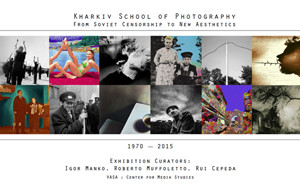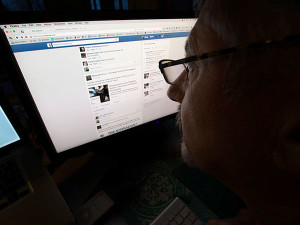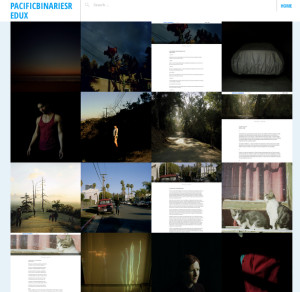| The VASA Journal on Images and Culture invited essays, videos and e-publications that inquired into the photographic e-book. Proposals addressed issues related to the disappearance of the object – the book, new materialities and potentials realized through e-publishing, as well as the challenges, history, and possibilities related to the evolution of e-books.
Mary Gold, VJIC Theme Editor |
In 1964 Marshall McLuhan published “Understanding Media: The Extensions of Man,” a pioneering study on media theory which proclaimed that the medium is the message. The medium itself, not the content it carries, should be the focus of study.

Cover of the first UK edition, published by Penguin Books (1967)
According to McLuhan, the medium is divided into two categories – “hot” and “cold.” A “hot medium,” for example, is one that requires all of our attention and leaves little room for participation, such as a book. A “cold medium,” on the other hand, leaves plenty of space for participation – that would be for example media like television and comic-books.
50 years later we are confronted with a novel experience in the face of contemporary media and technology: the e-book.
It is a hybrid of the book and the digital medium. With e-books we still read, we still become absorbed by the content, but we are no longer excluded from participating; we have the ability to interact with an e-book since, by design, we can zoom in and zoom out of pictures, listen to sound, navigate through non-linear hyperlink-connections, and can even create our own e-books.
The book, as an object, is now being challenged in form and content. It has evolved from a stable medium to a virtual, fluid one. The Internet – the digital – has changed how we access, produce, disseminate, and think about knowledge, storytelling, and art. Just as music and performance have changed from the traveling minstrels to vaudeville, from the stage to the screen; live voice has evolved from LPs, to tape, to CDs, to the Internet. Our story tellers have changed in form and so has the locus of control and production.
Having all this in mind the VASA Journal on Images and Culture invited essays, videos and e-publications that inquire into the photographic e-book. So we sent out a call for Proposals that address issues related to the disappearance of the object, new materialities realized through e-publishing, as well as the challenges, history, and possibilities related to the evolution of e-books.
 |
The Object Lost
Roberto Muffoletto Notably lost in photography communities are discussions related to the disappearance of the object – the photograph. |
 |
The Fluid Photograph, The Fluid Book
Blaise Tobia Digital technologies are highly fluid. Like fluids, they can morph continuously and function as great levelers. Once a medium is subsumed digitally it becomes simply one variant among many, and works become endlessly malleable and reproducible. |
 |
Hyperbola Blue
John Dalterio Hyperbola Blue sits somewhere between the traditional photobook and a choose your own adventure game. It uses the flexibility and language of the internet … |
 |
Photobook Anxeity: Social Media and “Indie” Publishing
Doug Spowart, PhD I doubt that Henry Fox Talbot or Anna Atkins realized in the 1840s what an impact their first use of photographs in books would have … |
 |
ein BILDERBUCH
Johannes Raimann The book, ein BILDERBUCH, is a laboratory about the question “What is a Bild?” … It is very important to see the book not as an answer but as an experiment and investigative process. |
| Pacific Binaries Redux And Or Project by Sarah Archino The And Or project presents a remixed and re-evaluated recap of our current online photography exhibition, Pacific Binaries: Redux. In remixing the show we aim to explore the nature of the digital photograph and the issues involved in its exhibition.more… |

